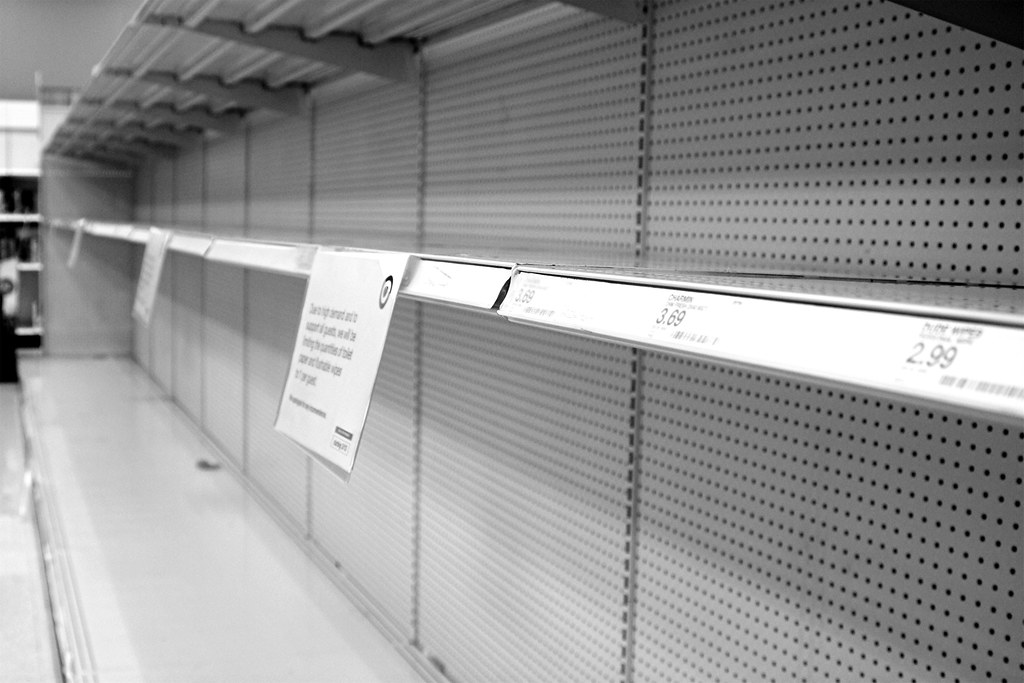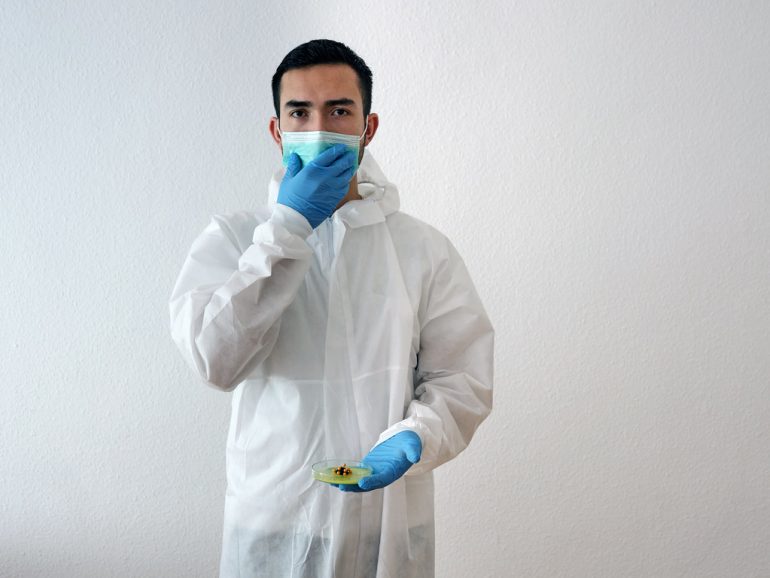By Mahima Advani | Online Reporter | SQ Online (2019-20)
With the start of the new decade, a global health crisis was likely the last thing on most people’s minds. SARS-CoV-2, the infamous novel coronavirus that causes Coronavirus Disease 2019 (COVID-19), has infected over 4,023,000 people and resulted in 279,000 fatalities as of mid May. As studies attempt to uncover the virus’s unique molecular mechanisms and find a potential vaccine, its physical and societal implications continue to drastically transform people’s lives.
The first cases of COVID-19 were reported in regions near the wet animal markets of Wuhan, China. Though scientists agree that SARS-CoV-2 originated from an animal source such as bats, different theories are still attempting to explain the rapid human-to-human transmission of this virus. One theory suggests that the virus first infected animals and then adapted towards targeting human-like receptors, allowing for efficient viral transfer from animals to humans, and subsequently human to humans. Another theory proposes that in early stages following zoonotic transfer, SARS-CoV-2 circulated in a small human population and eventually gained the ability to transmit more effectively between humans, leading to the worldwide pandemic.

Despite disagreements on the virus’s origin, some of its relevant biological features have been identified in the past few months. SARS-CoV-2 is part of the coronaviridae family of viruses that has been linked in the past to diseases such as severe acute respiratory syndrome (SARS) and Middle Eastern respiratory syndrome (MERS). These RNA viruses have large genomes, which allow for a significant portion of the virus’s genetic material to attack the host. Additionally, the enveloped nature of these viruses enables them to disguise themselves as part of the host membrane. These viruses often utilize novel pathways to replicate themselves using host cell machinery. SARS-CoV-2 uses a “spike protein” with a specific receptor-binding domain (RBD) to attach to the ACE2 receptor on human cells; these receptors communicate environmental signals to the cells they are attached to. As this virus primarily attacks cells in the respiratory system, COVID-19 causes symptoms such as dry cough, fever, and shortness of breath. Though a majority of cases are relatively minor and self-resolved, statistics from China indicate that 14% of cases are severe and may require hospitalization, and 5% of cases are critical and may require ventilators. The fatality rate of COVID-19 is almost 10x higher among the elderly and immunocompromised than in individuals who are not in these categories. Despite the varying severity of COVID-19, both symptomatic and asymptomatic people should be aware that they can spread the disease by sneezing or coughing within six feet of others.
In addition to the possibility of asymptomatic spreaders, the virus’s 14-day incubation period and the current inadequate testing measures–especially in the United States–have made COVID-19 difficult to control. The US has predominantly been using RT-PCR diagnostic tests, which require isolation of the viral RNA from a nose swab sample. Reverse transcriptase (RT) then converts the genetic material to cDNA. In the polymerase chain reaction (PCR), temperature-dependent cycles and specific primers create multiple copies of two viral genes which either confirm or deny the presence of the virus in the sample. With a lengthy turnover time of 3 days, this test cannot provide proper, real-time tracing of how many people the patient has come into contact with, making it extremely difficult to control the spread of the disease.

Another faster test is categorized as “point-of-care” and uses an antibody response to identify infections. The test exposes man-made “spike proteins” and corresponding RBDs of SARS-CoV-2 to the blood of a patient. Within a few days of infection, antibodies against this spike protein will be present in the patient’s blood; during the 15 minute test, a color change from the resulting antibody-protein complex will indicate a COVID-19 positive result. This method will allow for real time feedback and aid in controlling the spread of the virus, as exemplified by countries like South Korea. However, the lack of such diagnostic tests in the United States and other nations has worsened COVID-19’s impacts on our society.
Due to COVID-19’s high transmission rate and the world’s lack of preparedness, measures such as social distancing and shelter-in-place orders are an effort to “flatten the curve,” or limit the rapid spread of the disease in order to avoid exceeding the capacity of healthcare facilities. On a global level, numerous countries are under lockdown, tanking the travel and tourism industries. In the United States, schools and non-essential businesses have been closed, leaving millions filing for unemployment. With the declining economy, the United States federal government has sent out a $2 trillion relief package to qualifying people, small businesses, corporations, and governments and healthcare facilities. Forced to stay at home, people’s lifestyles have completely transformed for many months.
Understanding that a virus can have such extensive physical and societal implications on our world is a difficult thing to wrap our heads around, but it is important to learn from such a pandemic. Investing in the healthcare system and learning how to filter out fake news are lessons to learn in order to keep both ourselves and our communities safe and well-informed. Taking the proper precautions and focusing on supporting each other can allow us to make strides towards overcoming this global health crisis.
Following are a list of reputable links for further information:
https://www.cdc.gov/coronavirus/2019-ncov/index.html
https://www.who.int/emergencies/diseases/novel-coronavirus-2019
https://www.nih.gov/health-information/coronavirus
Sources:
https://www.cdc.gov/coronavirus/2019-ncov/faq.html
https://coronavirus.jhu.edu/map.html
https://www.nature.com/articles/s41591-020-0820-9
https://www.sciencedirect.com/science/article/pii/S0065352706660053
https://www.nature.com/articles/nrmicro3469
https://www.ncbi.nlm.nih.gov/pubmed/16877062
https://www.mayoclinic.org/diseases-conditions/coronavirus/symptoms-causes/syc-20479963?page=0&citems=10
https://www.cdc.gov/coronavirus/2019-ncov/hcp/clinical-guidance-management-patients.html
https://annals.org/aim/fullarticle/2762808/incubation-period-coronavirus-disease-2019-covid-19-from-publicly-reported
https://www.fda.gov/media/134922/download
https://onlinelibrary.wiley.com/doi/epdf/10.1002/jmv.25727
https://www.cidrap.umn.edu/news-perspective/2020/04/antibody-tests-may-hold-clues-covid-19-exposure-immunity-its-complicated
https://www.abbott.com/corpnewsroom/product-and-innovation/detect-covid-19-in-as-little-as-5-minutes.html
https://www.caltech.edu/about/news/tip-iceberg-virologist-david-ho-bs-74-speaks-about-covid-19
https://www.weforum.org/agenda/2020/03/this-is-the-human-impact-of-covid-19-and-how-business-can-help/
https://www.npr.org/2020/03/26/821457551/whats-inside-the-senate-s-2-trillion-coronavirus-aid-package

